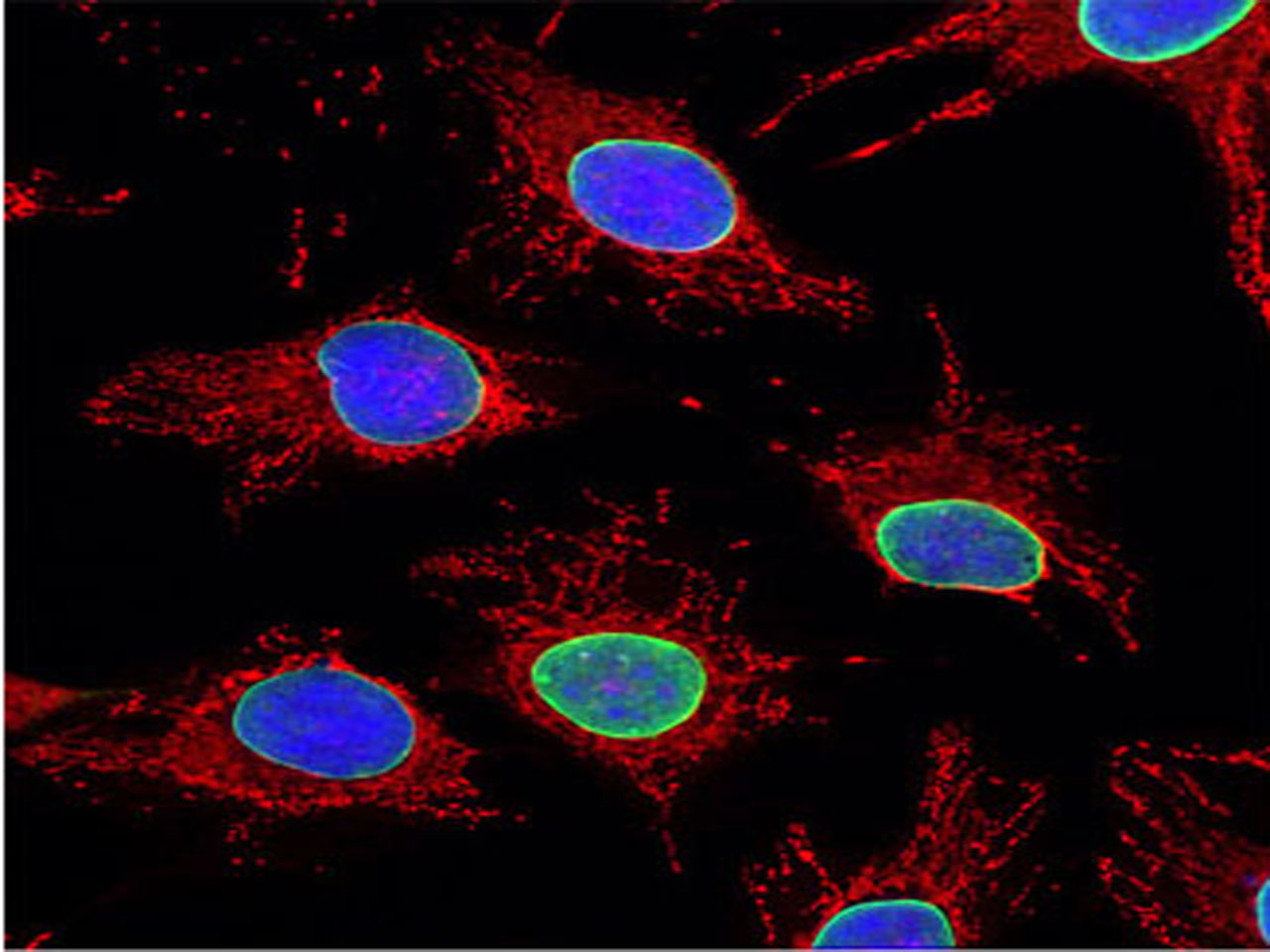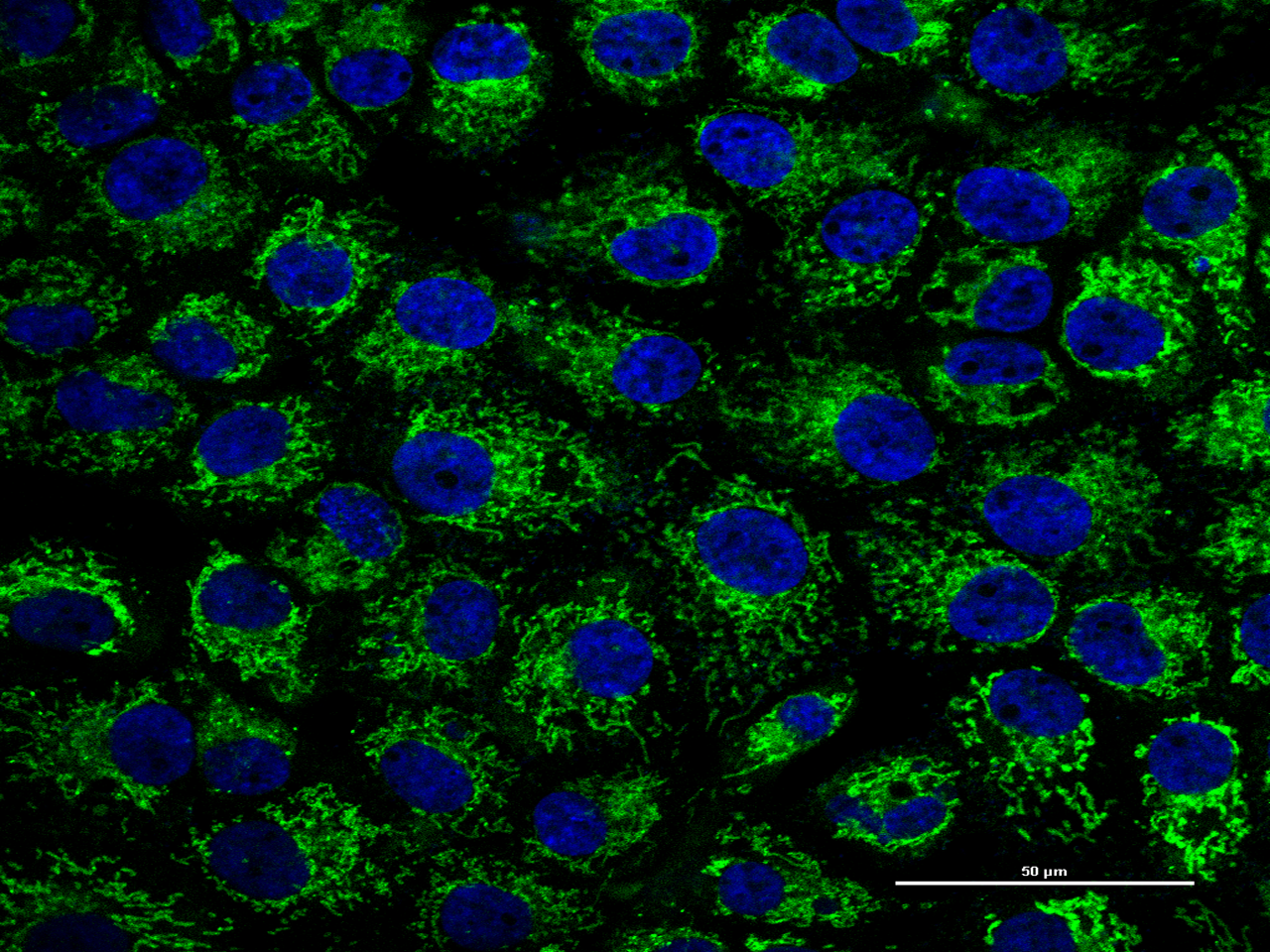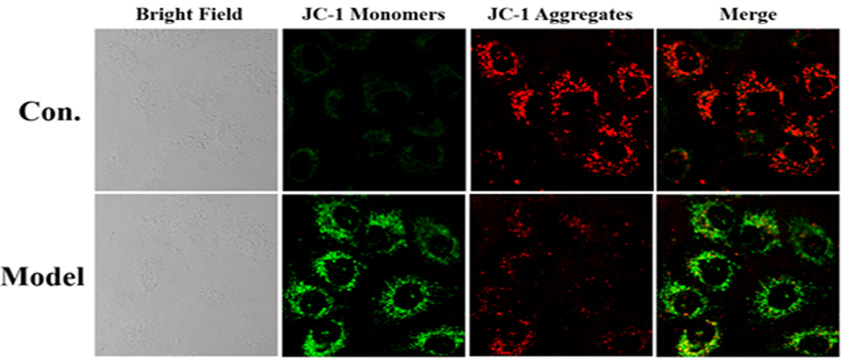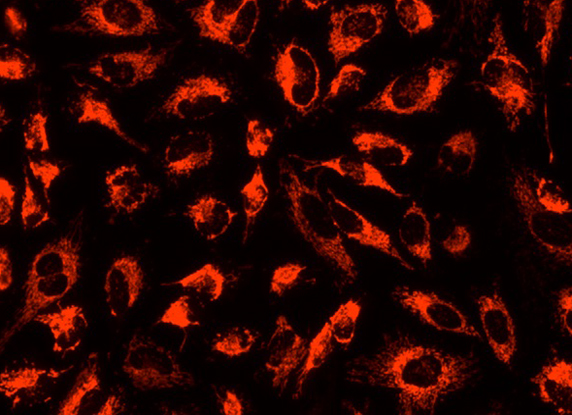Basic Information
Product name | JC-1 (Mitochondrial Membrane Potential Probe) |
Size | 5mg |
Storage | 4℃, away from light |
Shipping | Shipped with ice pack |
Validity | 12 months |
JC-1 excitation /emission wavelength(Low Membrane Potential) : 485/535nm
JC-1 excitation /emission wavelength(High Membrane Potential) : 550/600nm
Molecular Structure
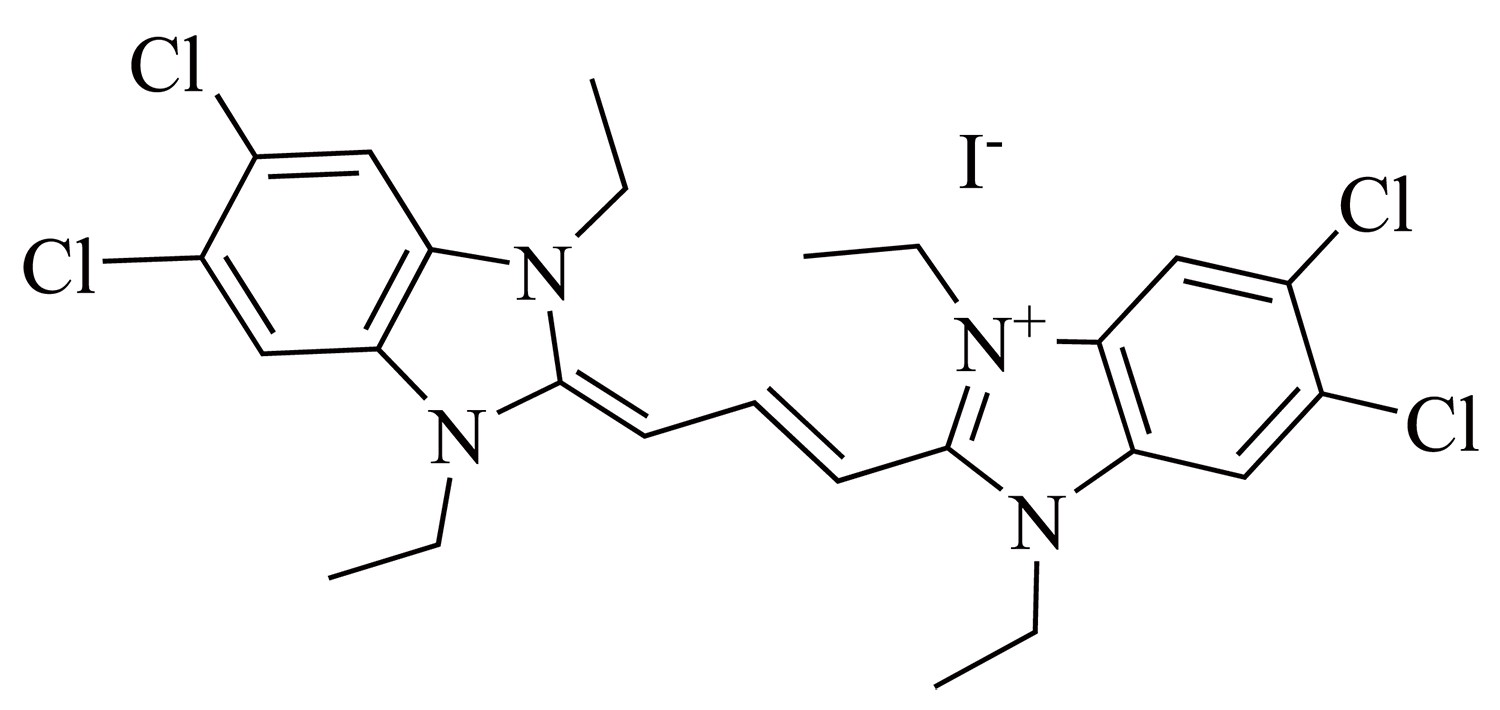
Product Introduction
JC-1 is an ideal fluorescent probe widely used to detect mitochondrial membrane potential. It can be used to detect the mitochondrial membrane potential of cells, tissues or purified mitochondria. When the mitochondrial membrane potential is low, JC-1 cannot aggregate in the mitochondrial matrix. At this time, JC-1 is a monomer with a maximum emission wavelength of 527 nm, which can produce green fluorescence; when the mitochondrial membrane potential is high, JC-1 aggregates in the mitochondrial matrix to form polymers (J-aggregates) with a maximum emission wavelength of 590 nm, which can produce red fluorescence. In this way, it is very convenient to detect changes in mitochondrial membrane potential by changing the fluorescence color.
The decrease of mitochondrial membrane potential is a hallmark event in the early stages of apoptosis. The change of JC-1 from red fluorescence to green fluorescence can be easily detected, and the change of JC-1 from red fluorescence to green fluorescence can also be used as an indicator of early apoptosis.
Table 1 JC-1 cell staining conditions
Method | Cell Type | Adherent/Dissociated | Incubation Conditions | ||
Dye Concentration | Temperature | Time | |||
Microscope | Neurons (rat) | Adherent | 2.0 µg/mL | 37°C | 20-30 min |
Neurons (rat) | Adherent | 1.0 µg/mL | 37°C | 20 min | |
O-2A oligodendrocytes (rat) | Adherent | 10 µg/mL | 37°C | 10 min | |
PC12 | Adherent | 10 µg/mL | 37°C | 10 min | |
Cardiac myocytes (rat) | Dissociated | 10 µg/mL | 37°C | 10 min | |
Flow cytometer | Human fibroblasts | Dissociated | 0.3 µg/mL | 37°C | 1 hour |
Colo-205 | Dissociated | 10 µg/mL | 37°C | 10 min | |
U937 | Dissociated | 10 µg/mL | 22°C | 10 min | |
Note
1. All fluorescent dyes have quenching problems. Please try to avoid light to slow down fluorescence quenching.
2. To avoid repeated freezing and thawing, this product can be repacked into small quantities.
3. To prevent precipitation, it is not recommended to dilute the stock solution directly into the working solution with 1× PBS.
4. This product is For Research Use Only, Not for Diagnostic Use.

